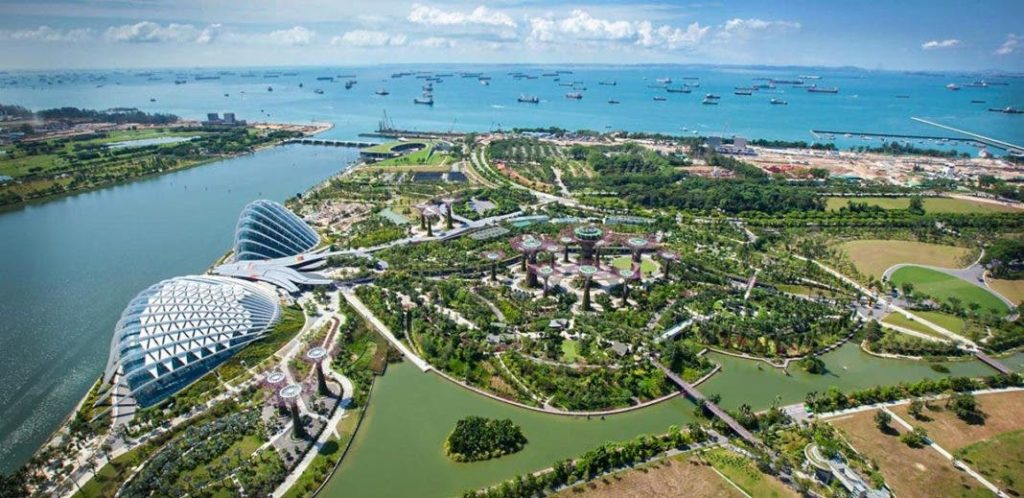MARCH 21 was International Day of Forests, and this year’s theme was “Forest restoration: A path to recovery and well-being.” According to the United Nations, our forests are key to achieving a green recovery, building resilience against future pandemics, and creating a more sustainable world for future generations. In addition, the UN stated that “Sustainable forest management can play a vital role in lifting millions out of poverty, and in building resilient economies and societies that can withstand pandemics, climate change and other global challenges.”
The earth’s forests cover approximately 4 billion hectares, which is 30 percent of the planet’s land area. Forest ecosystems not only consist of the trees but the thousands of species of plants, animals and microorganisms that live in them. More than half of our forests are located in five countries — Brazil, the United States, Canada, Russia and China — while the remaining percentage is found in 10 countries.
Our forests have invaluable benefits: from supplying food, water, herbal medicine, pharmaceutical products, and other essential items; providing income and livelihood; and serving as carbon sinks that clean one-third of the world’s greenhouse gas emissions to help mitigate climate change; preventing land degradation; and reducing risks of landslides, flooding and other disasters. Forests also help prevent food shortages and malnutrition since the trees and plants in these ecosystems offer a variety of healthy food. Not only that, but forests are also rich reserves for compounds used in nutraceuticals and pharmaceuticals. Moreover, forests are essential to the global water cycle. According to the Food and Agriculture Organization of the UN, 75 percent of the world’s freshwater are sourced from forested watersheds, and drinking water for one-third of the world’s largest cities come from forests.
Based on a study conducted by the United Nations Environment Program (UNEP), protecting our forests will help decrease the risk of future pandemics. In 2016, the UNEP estimated that 75 percent of emerging infectious diseases are zoonotic, stemming from “the transfer of pathogens from animals to humans.” This typically occurs when natural environments like forests are converted for human settlements or agricultural or commercial use. Wide-scale deforestation, ecosystem degradation and illegal wildlife trade have been the common causes of zoonotic diseases. Losing habitats leads to the reduction of natural buffer zones that separate people and animals and the pathogens they carry.
Green spaces are the lungs of our cities, and preserving forested areas and expanding city parks and other green open spaces are crucial in prioritizing the health and wellness of communities. During this pandemic, green outdoor spaces like parks and forests allow people to observe social distancing while they enjoy recreational and fitness activities. These green spaces are also inexpensive to visit. There is increasing evidence that spending time in restorative environments confers numerous health benefits like relieving stress, boosting the immune system, improving mental well-being, lowering blood pressure, and encouraging a more active and healthier lifestyle, among others.
In 2018, the World Economic Forum and the Massachusetts Institute of Technology identified several cities with the most trees. The top cities with the highest percentage of canopy coverage are Tampa in Florida with 36.1 percent, Singapore with 29.3 percent, Oslo with 28.8 percent, Vancouver with 25.9 percent and Sydney with 25.9 percent.
No other city in the world has acquired the title of “a city in a garden” than Singapore. It is a well-deserved distinction that the city-state worked hard for. Within 50 years, Singapore was able to transform its image into one of the cleanest and greenest places in the world. The project, “Singapore, a city in a garden,” began in 1970 with the mission of improving the quality of life of its population by increasing vegetation in public spaces. By the end of 1970, more than 55,000 trees were planted. Singapore has since flourished, and it is now a model for environmentalism and sustainability by establishing urban plans that promote the creation of world-class gardens and nature reserves, revitalization of urban parks and streetscapes, construction of green infrastructure, strengthening of their landscape and horticultural industry, and community engagement.
As Singapore’s population grew, so did its green spaces. Singapore’s land area is extremely limited, so the next step was to merge greenery with architecture. Another key component that has contributed to Singapore’s success and continued progress is the active involvement of its citizens. Its National Tree Planting Day and other awareness strategies have produced more than 1.4 million trees in 2014. To assure sustained environment-centric development, they instill principles of nature conservation in younger generations early on.
In 2019, Oslo was accorded the European Green Capital Award for 2019 for its efforts in sustainable development, which include preserving their natural areas, rehabilitating their waterway network, reducing carbon emissions by 50 percent, being the world’s electric vehicle capital, and enhancing cycling and public transport infrastructure, among others. Likewise, Vancouver is lauded for its Urban Forest Strategy that aims to “protect, plant, and manage trees to create a diverse, resilient, and beautiful urban forest on public and private lands across the city” and engage citizens to be actively involved in community stewardship. It is also the city’s objective to increase their urban forest canopy by 22percent before 2050, which will require planting more than 3,000 trees per year especially in critical parts of the city’s ecological network and in priority neighborhoods.
Article Credit: manilatimes
